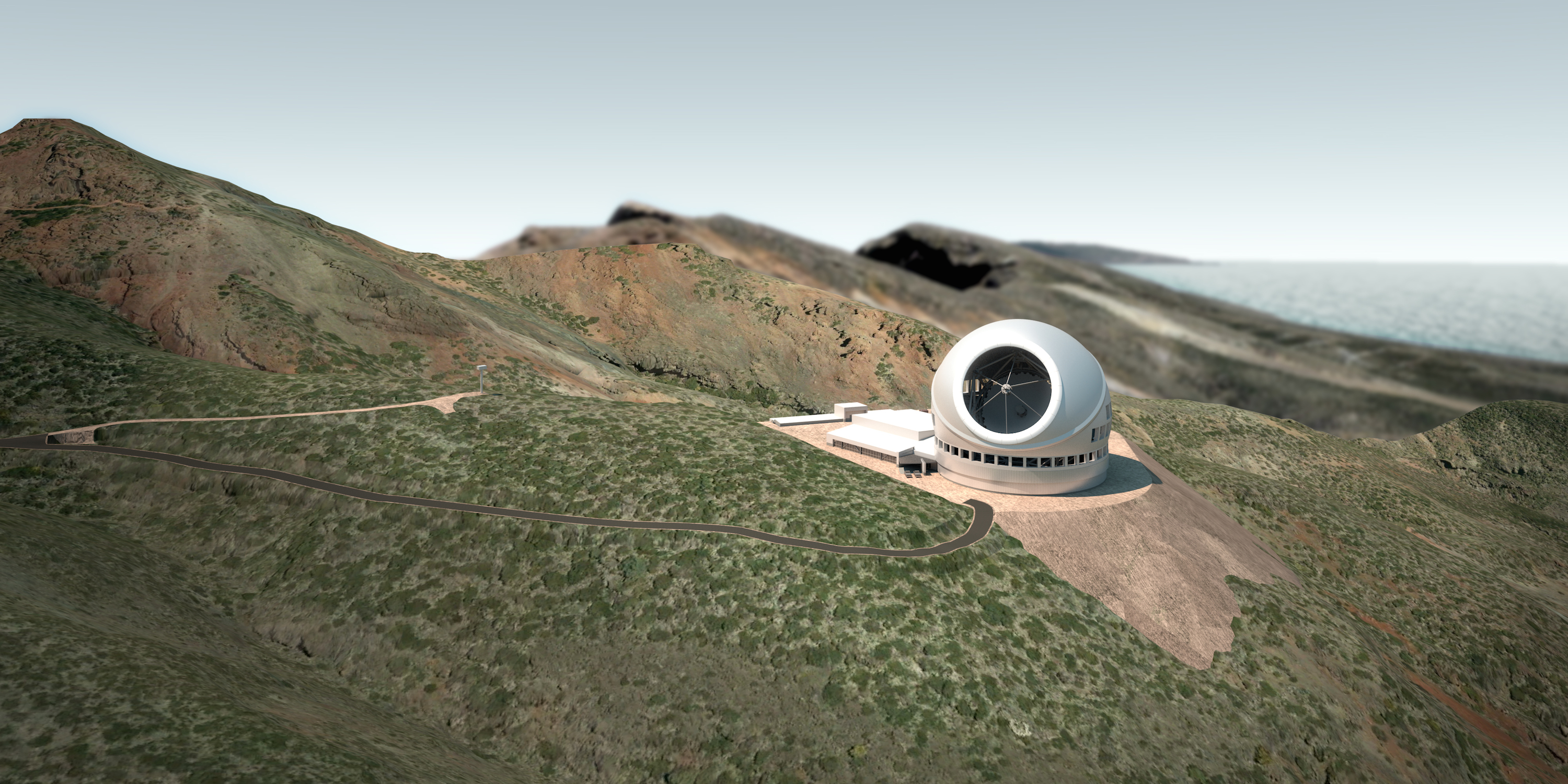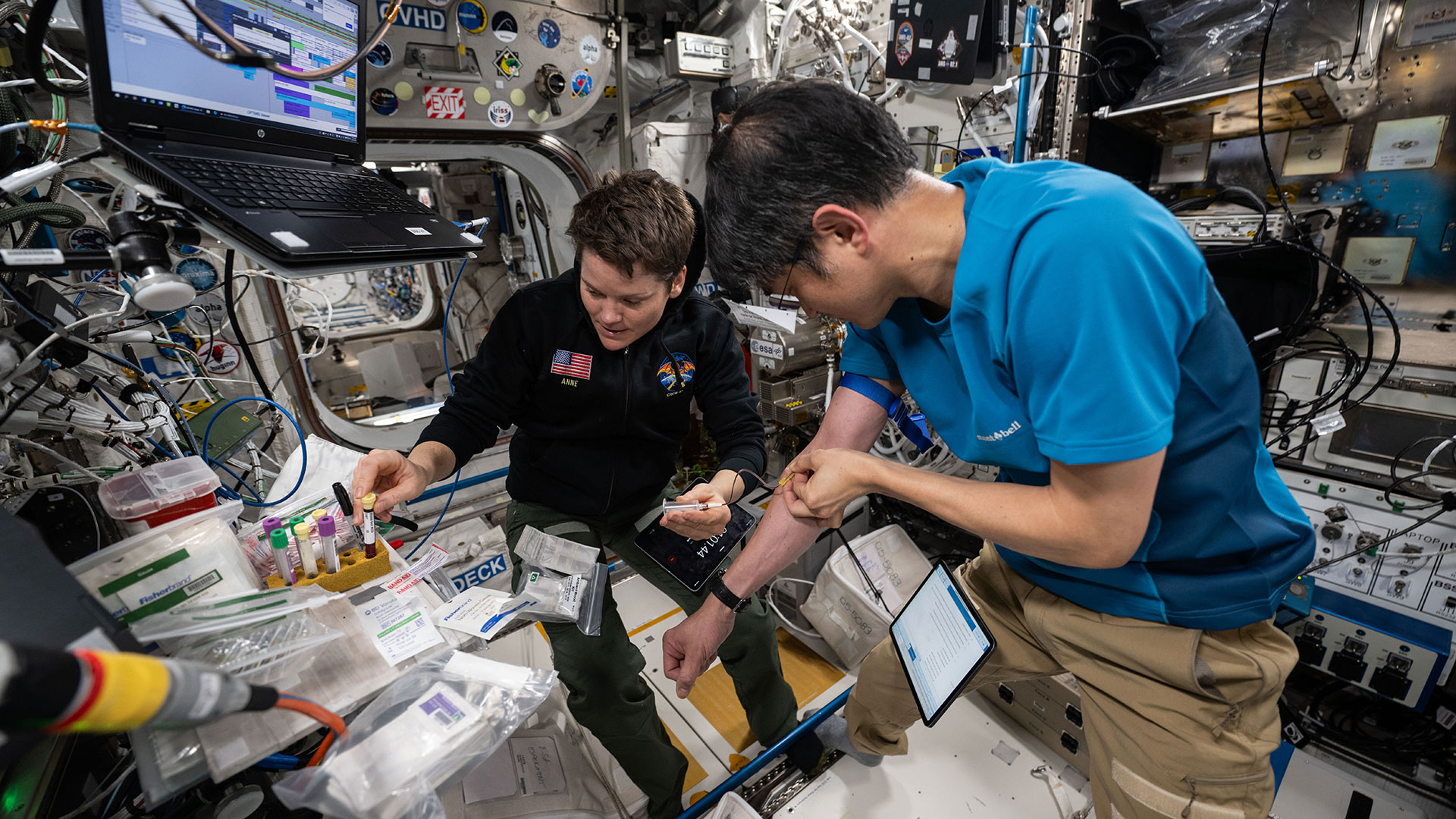Will the Thirty Meter Telescope Be Moved to the Canary Islands?

A new report by Canadian astronomers considers the benefits of moving the planned Thirty Meter Telescope from its controversial building site at Hawaii's Mauna Kea volcano to Spain's Canary Islands.
The next-generation telescope was set for construction on Mauna Kea, but the Hawaii Supreme Court pulled its construction permit in 2015 after saying the state had granted the permit without addressing a petition against the project. Construction began in 2014, but it has been halted multiple times due to protests calling out the mountain's sacred status locally, as well as the project's environmental and cultural impacts.
As reported by Motherboard, Canadian researchers have released a report that considers the costs and benefits of building the powerful telescope in Spain's Canary Islands instead. [Thirty Meter Telescope: Hawaii's Giant Space Eye (Gallery)]
The Thirty Meter Telescope (TMT) project is a partnership among Canada, the United States, Japan, China and India. Canada has pledged up to 243.5 million Canadian dollars ($180 million US) to the project over 10 years.
As its name suggests, TMT will feature a light-collecting surface nearly 100 feet (30 m) wide when it's up and running, potentially allowing astronomers to make groundbreaking discoveries about black holes, exoplanets and other celestial bodies and phenomena.
TMT isn't the only megascope in development. The Giant Magellan Telescope and the European Extremely Large Telescope (E-ELT) are currently under construction in Chile and are scheduled to come online in the early to mid-2020s.
The TMT report's authors emphasize that a move to the Observatorio del Roque de los Muchachos (ORM) on La Palma, in the Canary Islands, should be considered only if the project is facing a significant delay compared to the E-ELT, or if the project's funding is at stake. (The report goes into detail about how far along each of the other megatelescopes are from first light.) The report was compiled by a joint committee from the Canadian Astronomical Society and the Association of Canadian Universities for Research in Astronomy, which formed in January to consider alternative locations.
Get the Space.com Newsletter
Breaking space news, the latest updates on rocket launches, skywatching events and more!
"There is certainly a big scientific advantage to being first on the sky; to execute the first obvious observations that take advantage of new technology (the 'low-hanging fruit') and to be first to stumble upon exciting new discoveries," the researchers wrote in the new report. "At this point it is still unclear which of the three [very large optical telescopes] is most likely to be constructed first, even with the construction delays that TMT is facing. However, we can take action to minimize the impact of a delay, by ensuring that TMT has first-light capabilities that are unique, and scientifically exciting."
The researchers discuss the fact that the Mauna Kea location is strongly preferred scientifically to La Palma, but that La Palma could be a valid choice to minimize delay and be one of the first to turn eyes to the sky.
They detailed the benefits and challenges of the telescope's current location, and compared them with the pros and cons of building the telescope on La Palma, or at the two locations in Chile where the other two upcoming mega-telescopes are being constructed. They found that the climate and lower altitude at La Palma would require more adaptive optics — essentially more work done at the telescope mirror and instrumentation level to correct for interference from Earth's atmosphere.
"The main drawbacks of ORM are that it is warm and relatively wet, which makes [mid-infrared] observations all but impossible," Michael Balogh, chairman of the CASCA/ACURA TMT Advisory Committee that authored the report, told Motherboard. "That means it takes longer to achieve the same science compared with [Mauna Kea] or Chile. But for the most part, the same science is still achievable."
In 2016, a different Canadian committee recommended a backup site in Chile that would be the best for scientific purposes because of the altitude and clear weather, but the Thirty Meter Telescope's International Observatory Board chose the La Palma site as its alternative, according to the report.
A Northern Hemisphere location, such as Mauna Kea or La Palma, would give the new telescope the ability to see targets not visible from the other two locations and would work in coordination with other Northern Hemisphere telescopes, the researchers wrote. That's an important point, they said, because the E-ELT has a planned larger aperture, letting it potentially see farther targets more clearly. A northern telescope could contribute unique results the southern ones can't access.
A final resolution for the construction permit case is uncertain, the researchers wrote, but some scenarios could allow for construction to start back up in 2018. . As the government organizations reach a conclusion, the international project's leaders will have to consider when — and where — the telescope will finally see first light.
Email Sarah Lewin at slewin@space.com or follow her @SarahExplains. Follow us @Spacedotcom, Facebook and Google+. Original article on Space.com.
Join our Space Forums to keep talking space on the latest missions, night sky and more! And if you have a news tip, correction or comment, let us know at: community@space.com.

Sarah Lewin started writing for Space.com in June of 2015 as a Staff Writer and became Associate Editor in 2019 . Her work has been featured by Scientific American, IEEE Spectrum, Quanta Magazine, Wired, The Scientist, Science Friday and WGBH's Inside NOVA. Sarah has an MA from NYU's Science, Health and Environmental Reporting Program and an AB in mathematics from Brown University. When not writing, reading or thinking about space, Sarah enjoys musical theatre and mathematical papercraft. She is currently Assistant News Editor at Scientific American. You can follow her on Twitter @SarahExplains.
